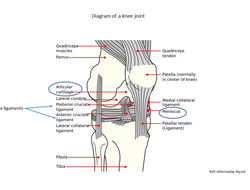Arthritis, physical activity, and Nutrition
Published: February 08, 2019
What is arthritis?
Very simply “arthritis” describes a condition of joint inflammation.
However, in real terms arthritis is far more complicated and in many cases a debilitating disease.
Collectively arthritic diseases come under the heading of “rheumatic diseases” of which there are more than 100 variations of unidentified cause, have no cure, and are most frequently chronic conditions with acute flare-ups.
No population group is immune and the incidence of these diseases increases with changes associated with aging.
There are two distinctive forms of the condition: osteoarthritis which is a non-systemic joint disease and inflammatory arthritis (IA) a systemic disease of connective tissue.
Both forms are characterized by pain and inflammation, but have other characteristics which set them apart.
Osteoarthritis
Osteoarthritis involves the gradual break down of joint cartilage and margins of bones along with synovial membrane changes.
Your synovial membranes line joints and secrete lubricating synovial fluid into joints. Click on the diagram of the knee to learn about the knee joint.
While osteoarthritis is very common in people over the age of 70 and often associated with wear and tear on the joints, this disease is not restricted to older people and is becoming more prevalent in much younger people.
Wear and tear of joints occurs through overuse, and there are many ways in which you can overuse or over stress your joints which can increase your risk of developing osteoarthritis.
While knees, hips, ankles, and spine which support your body weight are affected, your thumbs may also be affected.
Poorly aligned joints also contribute to this disease.
Inflammatory arthritis: Rheumatoid arthritis
Rheumatoid arthritis (RA), one of several systemic connective tissue and inflammatory arthritic diseases, is now thought to be autoimmune influenced.
Other inflammatory arthritic conditions include ankylosing spondylitis, psoriatic arthritis, and other spondyloarthropathies. Other autoimmune arthritic conditions...link to the full article to learn more.
References
1.
Dorfman, L. (2004) Medical Nutrition Therapy for Rheumatic Disorders. In Mann. K. & Escott-Stump, S. (Eds.)(2004). Krause's Food, Nutrition & Diet Therapy. (11th Ed.) Elsevier
2.
Gropper, S.S., Smith, J.L. & Groff, J.L. (2005). Advanced Nutrition and Human Metabolism (4thEd.). Belmont, CA: Thomson Wadsworth.
3.
Whitney, E. & Rady Rolfes, S. (2005). Understanding Nutrition. Belmont, CA: Thomson Wadsworth
4.
Centre for Science in the Public Interest October 2009, March 2013, Jan/Feb 2013, October 2013, September 2014

